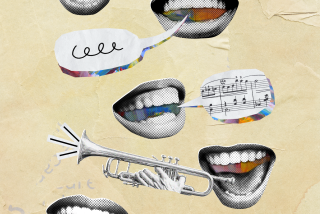Opinion: Hey, grievance-mongers, lighten up on the ‘cultural appropriation’ complaints
Bet you didn’t know that white people eating tacos falls into the category of “cultural appropriation.”
Well, it does now. This past May 5 — a.k.a. Cinco de Mayo — two colleges canceled or significantly altered their annual “Phi Phiesta” taco-bar fundraisers after complaints about cultural appropriation from offended Latino student organizations.
The irony was that on the very same day, May 5, CNN.com’s Cindy Y. Rodriguez, editor for Latino audiences, wrote an article saying that it was OK for gringos to eat Mexican food to celebrate Cinco de Mayo, as long as they didn’t overdo the nachos and tequila. The article, a list of Cinco de Mayo do’s and don’ts, explained that although wearing a sombrero and a fake mustache that day might perpetuate offensive stereotypes of Mexicans, a celebratory margarita or two would be fine.
You may be wondering, at this point, exactly what is cultural appropriation? Technically, it’s the process by which one culture adopts and incorporates elements of another: the Romans sculpting Greek-style statuary, for example. But now, it’s become a catchall designation for anything that white people might borrow from an ethnic culture that the grievance-mongers in that culture don’t like.
Some of the cultural appropriation complaints are well taken because the appropriated practices genuinely include mockery of the affected minority group: minstrel-show whites in blackface, for example. Sombreros and fake mustaches might fall into that category. But tacos?
As the ethnic grievance industry grows ever more shrill and its spokespeople more thin-skinned, the list of ethnic practices forbidden to whites grows ever longer.
In a March 4 article in Salon titled “Why I can’t stand white belly dancers,” enraged Arab American author Randa Jarrar hurled the cultural appropriation card at white women who take up belly dancing and its exotic costumes for exercise or fun. “Arab women are not vessels for white women to pour themselves and lose themselves in,” Jarrar fumed. She fumed some more after critics of her article asked such legitimate questions as: Why is it cultural appropriation for white women to belly dance but not for black ballerina Misty Copeland to dance to the music of white composer Stravinsky? In a follow-up article on March 18 titled “I still can’t stand white belly dancers,” Jarrar accused her critics of “whitesplaining” and ignoring “the systematic racism by the dominant culture.”
Then, last month, Gloss writer Elizabeth Licata leveled the cultural appropriation charge at some of the celebrities attending the Coachella music festival, in which people dress up like ’60s hippies. Licata noted that the latest Coachella facial-adornment fad for females is a Hindu bindi between one’s eyebrows. “The bindi is not just a pretty piece of sexy ‘exotic’ jewelry,” Licata scolded about the religious and spiritual symbol.
It’s amazing that no old hippies were on the scene to complain that Coachella itself is a cultural appropriation from their culture.
The grievance-mongers ought to lighten up and quit perceiving every white person as an oppressor and every adoption of an ethnic practice as an insult. But I wouldn’t count on that these days.
Charlotte Allen writes frequently about feminism, politics and religion. Follow her on Twitter @MeanCharlotte.
More to Read
A cure for the common opinion
Get thought-provoking perspectives with our weekly newsletter.
You may occasionally receive promotional content from the Los Angeles Times.










